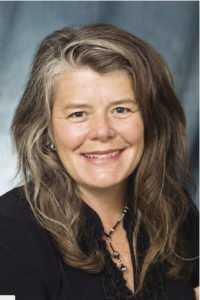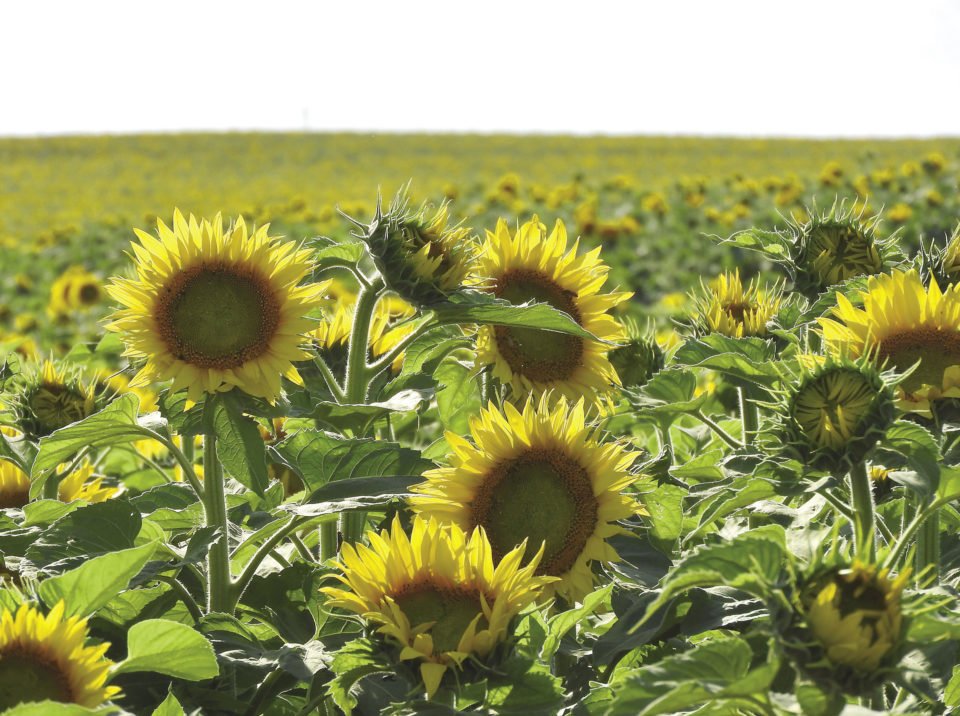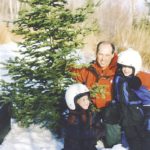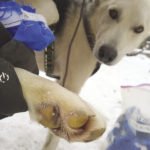Outside, the dried stalks of milkweed, tansy, bee balm and sunflowers sport fluffy little caps of snow. Each dead flower clings to a few tiny time capsules, but many of the seeds they once cradled now lay buried under the snow, lying dormant until favorable growing conditions return.
In the warm dampness of spring, some of those seeds will sprout, grow, bloom and set seeds of their own. Others may take a year or two to germinate, and still more (if they don’t get eaten by mice or ants or mold) will lie dormant in the soil for decades. The sum total of all the seeds is known as the soil seed bank. From it, native prairie plants have returned to fallow fields, forests have recovered after fires, and scientists have studied the inhabitants of past climates. As important as natural seed banks are, they are subject to all sorts of disturbances, and the viability of their seeds is left to chance.
Dr. Julie Etterson, ecological genetics professor at the University of Minnesota-Duluth, and her team of scientists from across the country, have created a different kind of seed bank. Over the course of three growing seasons, from 2013 to 2015, they painstakingly gathered seeds from 65 species of wild plants at 270 research sites across the country, and deposited them at the National Center for Genetic Resources Preservation, USDA, Fort Collins, Colorado. There, with special cold storage and preservation techniques, the seeds will remain viable for decades, and accessible to scientists in ways that seeds in the soil are not.
Over the next 50 years, scientists will be able to withdraw the old seeds, plant them next to modern seeds, and study how the plants have changed over time.
Etterson, with her colleague, Dr. Briana Gross, have already tested this “resurrection” approach by using sunflower seeds that were preserved in the seed bank 32 years ago, and comparing them to modern sunflowers harvested at the same sites near Minneapolis and Fargo. They planted the preserved seeds next to the modern seeds and compared the plants carefully as their unique genetics responded to the same variables, such as temperature and moisture.
As predicted, the modern annual sunflowers bloomed later in the summer than the historic plants to take advantage of the longer growing seasons with climate change. In addition, this work suggested modern plants seem to have experienced gene flow from urban gardens—their thicker stems, bigger flower heads, and fewer branches are all traits that we enjoy in horticultural varieties, but are not common in the wild.
“This is definitely a cautionary tale,” Etterson told me over the phone, “Both garden variety and GMO crops could contaminate native species.” She went on to describe how even the “native” flower seed mix she’d planted in her backyard pollinator garden contained pink bee balm and other hybrid flowers. Some of them may have good nectar, but they’re often missing the traits that make them most valuable to our native insects and birds. Her pink bee balm, for instance, doesn’t set seed.
Sunflowers are the one major crop that is native to North America. While this makes the wild varieties vulnerable to genetic mixing, it also made Etterson’s study possible through access to old seeds. With few exceptions, seed banks have been focused on preserving agriculturally important species.

In contrast, Project Baseline aims to protect native and introduced species whether or not they are of current economic importance to humans. One of the target species—a yellow monkey flower native to California—is as well-studied as fruit flies. Its entire genome is sequenced. And yet, Project Baseline offers even more opportunities for discovery. The prospects for learning may be even greater with spreading dogbane. This understory plant—common across much of the U.S. and Canada—with sweet-smelling flowers, milky sap, and brilliant yellow fall colors, has never been the subject of a scientific paper. What might we have yet to learn from it?
The importance of seed banks has been in the news recently. After Dutch plant breeders figured out which chemicals make Brussels sprouts taste bitter, they bred modern high-producing varieties with heirloom varieties (stored in seed banks) that contained less of those chemicals. It’s not just that your taste buds have matured; Brussels sprouts really do taste better than when you were a kid. Both production and price have increased four-fold as a result.
Many seed banks preserve animal genes, too, as an insurance policy against the day when we might need livestock with a certain disease resistance, or higher tolerance to drought. Recently, a study illuminated the fact that virtually all the Holstein bulls whom dairy farmers were using to inseminate their cows could be traced back to just two male ancestors. So a geneticist at Pennsylvania State University withdrew some heirloom “seed” from the same Fort Collins facility that Project Baseline uses, and started breeding older, healthier traits back into his experimental herd.
While seed banks are built for longevity, Project Baseline’s long timescale is pretty unique among research projects and grants.
“This is really different,” says Samuel Scheiner, the director of the National Science Foundation program that funded the project, “but exactly what we need to do if we’re going to study global change.”
So, Etterson has planted a metaphorical tree, and the scientists of the future will enjoy its proverbial shade. But she has also planted actual trees. Trees aren’t included in the suite of Project Baseline species—they take too long to mature. But much research has already been done on which trees will be able to survive in the future climate of Minnesota, and Etterson has taken action.
In collaboration with the Nature Conservancy, a team of researchers planted 110,000 trees in Minnesota’s Arrowhead Region in an attempt to replace the dying paper birch. The seedlings of white pines, red oak, and bur oaks were sourced locally and from the Minneapolis area. The climate has already changed enough that “southern Minnesota tree ecotypes grow better in today’s climate than their more northern counterparts,” according to Etterson.
This type of assisted migration, where we intentionally help species move toward a favorable climate, is just one possible outcome of Project Baseline. It may be helpful if scientists determine that a plant can’t adapt quickly enough on its own.
Currently, scientists know almost nothing about the rate at which species will be able to adapt to climate change. The Project Baseline seed bank is trying to change that.
“I think that this project plays a critical role in this moment by providing us with the ability to fill a critical gap in our knowledge. It will help us understand how we can manage and help species persist as the environment changes around them,” said Etterson.
Every seed is a time capsule. And whether it is stored deep in a vault in Colorado, or is lying beneath the freshly fallen snow, or growing in a scientist’s greenhouse, it may also be one of the seeds that will help us understand change.




